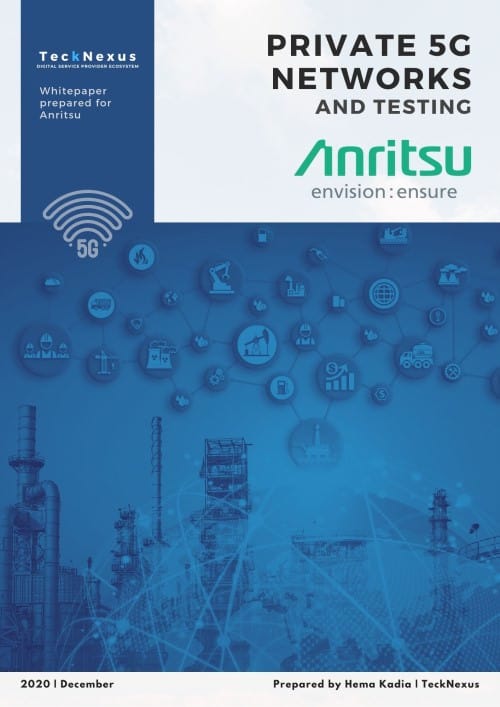5G has been commercially launched by 129 operators globally in 57 countries, as of October 2020. Though the global operators’ focus was initially on the consumer segment, we have recently seen good traction in the private 5G enterprise use cases and spectrum allocation to the enterprises.
In the first part of this whitepaper, we are highlighting which industry verticals are investing in the non-public 5G networks (i.e., Private 5G), how regional regulations are enabling the adoption of the private 5G networks, and who are the ecosystem players delivering the 5G connectivity. Insights from the below research by TeckNexus is presented in this whitepaper.
- Global spectrum allocations – Mid-band and high-band (mmWave) spectrums allocated/planned in the 57 countries where 5G is commercially available as of October 2020.
- Global non-telecom spectrum winners – Non-telecom winners who were allocated dedicated spectrum by the regulatory authorities in the respective 57 countries.
- Enterprise use cases across industry verticals – Seventy-five private 5G enterprise use cases in-deployment mode or in trial-mode, globally across the industry verticals.
- Private 5G Ecosystem players – Who are ecosystem players for the private 5G networks? How are they positioned to win and lead the private 5G network business?
- Considerations for testing private 5G networks – what are the different aspects that need to be tested for private 5G networks and in general for 5G
In the second part of this whitepaper, Anritsu presents its comprehensive testing solution, covering private 5G, public 5G, and hybrid 5G networks.
To get more details, download this private 5G network and testing the Anritsu report, prepared by TeckNexus.



